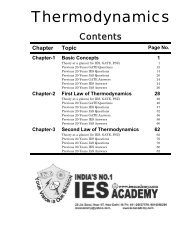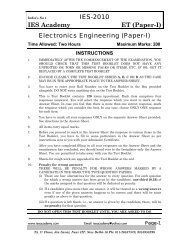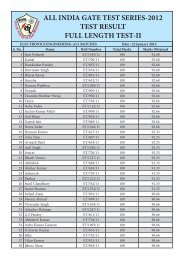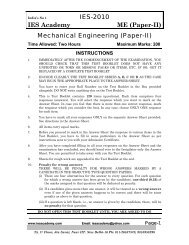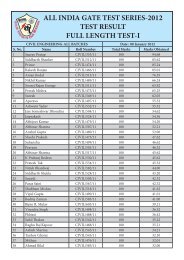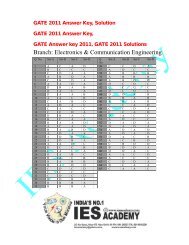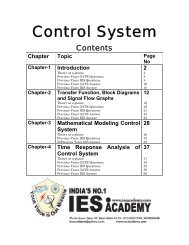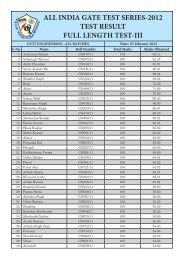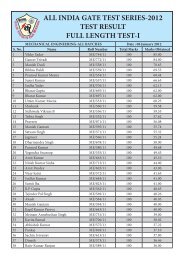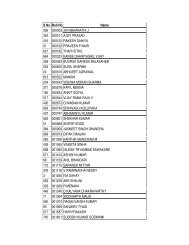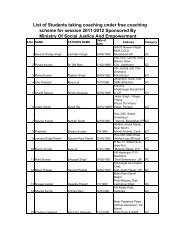Electrical Machine - IES Academy
Electrical Machine - IES Academy
Electrical Machine - IES Academy
You also want an ePaper? Increase the reach of your titles
YUMPU automatically turns print PDFs into web optimized ePapers that Google loves.
India’s No. 1<br />
<strong>IES</strong> <strong>Academy</strong><br />
Transformer<br />
Chapter-1<br />
Impedance Transformation<br />
For secondary circuit,<br />
Z<br />
L<br />
E<br />
=<br />
I<br />
Effective input impedance at primary terminals,<br />
Using turns ratio,<br />
Z<br />
i<br />
2<br />
2<br />
E N E N<br />
= = ( ) = ( ) . Z<br />
I<br />
1 1 2 2 1 2<br />
1 N2 I2<br />
N2<br />
An impedance of ZL when viewed ‘through’ a transformer of turns ratio (N1: N2) is seen as (N1:<br />
N2) 2 ZL. A transformer thus acts as an impedance converter. The transformer can be<br />
interposed in between a source and a load to ‘match’ the impedance for maximum power<br />
transfer to take place.<br />
Similarly, impedance Z1 in the primary circuit can be transferred (referred) to secondary side<br />
as<br />
⎡<br />
⎢<br />
⎣<br />
2<br />
N ⎤<br />
2 Z<br />
1 Z<br />
1<br />
N<br />
⎥ =<br />
1<br />
⎦<br />
'<br />
L<br />
Z<br />
i<br />
E<br />
=<br />
I<br />
1<br />
1<br />
For an ideal transformer, it may be summarized:<br />
(i) Voltage is transformed into direct turn ratio.<br />
(ii) Current is transformed into inverse turn ratio.<br />
(iii) Impedance is transformed into direct turn ratio squared.<br />
(iv) Power remains same.<br />
(v) Frequency remains same.<br />
Practical Transformer<br />
At no load<br />
(a)<br />
Effect of transformer core loss: The core loss consists of hysteresis loss and eddy<br />
current loss and are always present in the ferromagnetic core of the transformer. Due to<br />
Hysteresis, the exciting current I e leads the flux m by hysteretic angle α.<br />
The exciting current consists of two components Iϕ and Ic. Iϕ is called reactive or<br />
magnetizing component and it provides the required magnetic flux m . The second<br />
component Ic is called core-loss component. Total core loss is given as Pc = V 1 ' Ic.<br />
Pc<br />
VI ′<br />
1 c<br />
= Pc or Ic<br />
= Amp.<br />
V ′<br />
1<br />
www.iesacademy.com E-mail: iesacademy@yahoo.com Page-5<br />
25, 1 st Floor, Jia Sarai, Near IIT. New Delhi-16 Ph: 011-26537570, 9810958290




